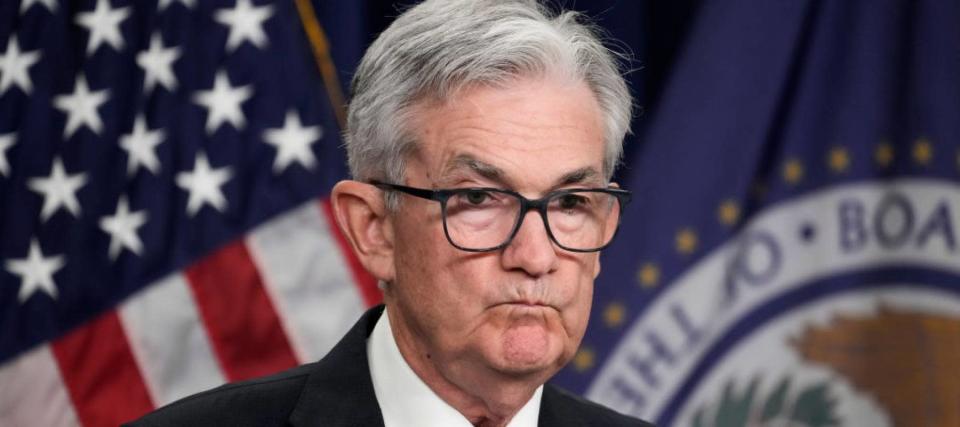‘The clock is ticking’: Canada just hiked its key rate by a supersized 0.75% — here’s what the move could mean for US consumers

Two weeks out from his next interest rate announcement, Federal Reserve Chair Jerome Powell’s next step in the fight against inflation seems all but guaranteed.
Pressure on Powell is increasing, especially in the wake of his Canadian counterpart announcing a supersized 0.75% hike to his country’s overnight borrowing rate on Sept. 7.
The move only adds more stress for Canadian consumers to shoulder, when they’re already grappling with a difficult housing market and heavy debt loads. But what might it mean for their southern neighbors?
With the Fed’s next meeting scheduled for Sept. 20 to 21, analysts are already wagering that Powell will follow in Bank of Canada Governor Tiff Macklem’s footsteps.
Here’s why central banks around the world are entertaining such drastic measures — and what it means for consumers on both sides of the border.
Don’t miss
-
Variable mortgage rates are going up — here’s how to prepare so you don’t miss out on major savings
-
Too many Americans are still missing out on cheaper car insurance
-
A TikToker paid off $17,000 in credit card debt by ‘cash stuffing’ — can it work for you?
A little bit of pain is the goal
Normally, the Bank of Canada aims to keep inflation at a modest 2%, just like the Federal Reserve does.
But with Canada’s inflation rate hovering at 7.6% in July — just a hair under its highest rate in 40 years — the bank has had to call in the big guns.
The country’s central bank typically tinkers with its key policy rate in modest 0.25% increments, but Macklem announced Sept. 7 that it would go up by 0.75% — after a shocking full percentage point increase in July.
That brings the Canadian overnight rate to 3.25% — up from just 0.25% in January.
The effect of rising rates on consumers is immediate.
“Residential investment is already falling really rapidly, consumption of durable goods is falling rapidly,” notes Karyne Charbonneau, senior economist with CIBC. “So we’re already seeing the impact it’s having on consumers.”
“The higher it goes, the more painful it is for consumers. But that’s kind of the goal. That’s how you get inflation under control by stopping spending.”
Keeping the economy on track
Charbonneau emphasizes that the rate increases won’t last forever. Both the Bank of Canada and the Federal Reserve will aim to eventually return to a neutral rate — meaning a rate that doesn’t stimulate or restrict the economy. Presently, the estimated neutral rate is 2.5%.
“Being at 3.25%, it would be in restrictive territory, which means at some point it needs to come back down to what they estimate the neutral rate is,” says Charbonneau.
But as for timing, she says “it’s hard to predict exactly when that will be at this point.”
Charbonneau points out that front-loading rises in the overnight rate is a way to expedite the changes needed to lower inflation. Another significant rate hike will help to get to neutral territory faster.
She adds the economy is already showing signs of slowing.
However, for an economic course correction to be successful, the higher interest rates will have to stay with us on both sides of the border for a while.
“It’s painful,” says Charbonneau, “but it’s part of the process. Otherwise, we get into a much worse situation.”
How might this affect the Fed’s next announcement?
Like in the U.S., inflation in Canada is “down a little, but still too high” — as Bank of Canada Governor Tiff Macklem wrote in an August op-ed.
The most recently updated U.S. inflation figures show July’s 8.5% inflation rate dropped slightly from June’s 41-year high of 9.1%, which could mean the Fed is seeing some success to its strategy.
But one month of moving in the right direction isn’t enough to stop pressing, Powell indicated at a meeting in August, adding that this was no time to hit “pause” or “stop” on inflation measures.
Powell reasserted his hawkish stance on combating inflation in a moderated discussion on Sept. 8 at the Cato Institute, a libertarain think tank in Washington.
“History cautions strongly against prematurely loosening policy,” he said. “I can assure you that my colleagues and I are strongly committed to this project and we will keep at it until the job is done.”
That same morning, investors were pricing in an 86% chance of a 75 basis point hike at the Fed’s September meeting, according to the CME Fedwatch tool.
With the Fed’s overnight rate now sitting between 2.25% and 2.50%, with plans to raise that to at least 3.4% by the end of the year, it’s all but certain there will be another supersized increase announced later this month.
“The clock is ticking,” Powell said. “The longer that inflation remains well above target, the greater the concern that the public will start to just naturally incorporate higher inflation into its economic decision making.”
“And our job is to make sure that doesn’t happen.”
What to read next
This article provides information only and should not be construed as advice. It is provided without warranty of any kind.




